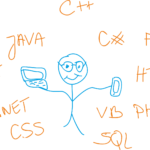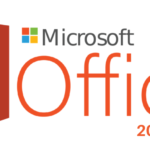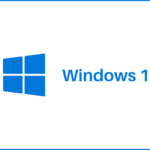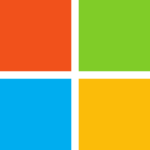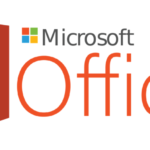Java script
In both client-side (in browsers) and server-side (with tools like node.js) web development, javascript is an admired programming language. It is recognized for its adaptability and capacity for producing interactive and dynamic online content. What javascript help can i provide you? Do you have queries, require code samples, or desire to learn more about a certain language feature.

Java script tutorials/ java scripting tutorial/ tutorial javascript/ javascript tutorial
To get you started, i may offer you a few javascript lessons that are suitable for beginners. Here is a step-by-step tutorial for learning javascript programming basics:
Starting out.
- Javascript overview – what is javascript and how does it relate to web development?
- Constructing – discover how to include javascript into your html file.
Data types and variables.
- Variables – declaring and assigning variables.
- Data types – recognize various data kinds, such as booleans, strings, float, and integers.
Operators.
- Arithmetic operators – +, -, *, /, %
- Comparison operators – ==, !=, >, <, >=, <=
- Logical operators – &&, ||, !
Manage the flow.
- If statements – conditional branching determined by a condition.
- Loops – including the for, while, and do-while loops.
Functions.
- Defining functions – producing code modules that may be reused.
- Passing data – into and out of functions using parameters and return values.
Arrays.
- Array creation – keeping several values in a single variable.
- Array methods – such as length, push(), and pop().
Objects.
- Creating key – value pairs for structured data as an object.
- Object methods – activities performed by objects.
Manipulation of dom.
- A brief introduction – to the document object model (dom), which describes how javascript works in conjunction with html and css on a web page.
- Choosing elements – using functions like getelementbyid() and getelementsbyclassname().
- Changing element – content, attributes, styles, etc.
Events.
- Event handling – reacting to user input and activities like clicks.
- Event listeners – adding actions that will be carried out when events happen.
Programming that is asynchronous.
- Callbacks – using callbacks to handle asynchronous actions.
- Promises – a more organized method of managing asynchronous processes.
- Async/await – synchronous writing of asynchronous code.
Java script for each
When repeating through an array’s items in javascript, the foreach function is used to carry out a specific operation for each element.
Java script is
Javascript (commonly abbreviated as js) is a flexible and popular computer language best recognized for its application in the creation of websites. It enables programmers to add functionality, interaction, and dynamic content to websites and online apps. Being immediately performed by web browsers makes javascript an essential part of front-end web development. Additionally, it has becoming more common on the server side because to tools like node.js.
Here are some essential javascript principles.
- Client-side scripting – javascript is frequently used for client-side scripting, which alters the look and behavior of web pages by interacting with the document object model (dom), which is a component of the user’s web browser. Real-time changes, animations, and form validation are made possible through this.
- High-level language – because javascript is a high-level programming language, programmers may create code with a human-readable syntax and avoid worrying about the nitty-gritty.
- Interactivity – javascript enables programmers to react to user events including input, scrolling, and clicks. Through rapid feedback and a decrease in page reloads, this interaction improves the user experience.
- Data types – numerous data types, including integers, texts, booleans, objects, arrays, and more, are supported by javascript.
- Functions – in javascript, functions enable programmers to group and encapsulate code for reuse. Functions can be created, called, and even have parameters supplied to them from other functions.
- Event-driven programming – a significant portion of javascript’s strength derives from this feature. Developers can configure event listeners to launch particular operations when particular events, such button clicks or form submissions, take place.
- Cross-browser compatibility – the majority of contemporary web browsers support javascript, making it a dependable option for creating cross-browser web apps.
- Third-party libraries and frameworks – the extensive ecosystem of libraries and frameworks available for javascript makes a variety of programming jobs easier. Examples include react for creating user interfaces and jquery for manipulating the dom.
- Asynchronous programming – is supported by javascript using methods such as callbacks, promises, and async/await. This is crucial for managing operations that might be time-consuming, including obtaining data from servers.
- Server-side development – with the introduction of node.js, javascript can now also be used for server-side programming. This makes it possible for programmers to create comprehensive web apps using just one programming language.
- Security considerations – because javascript is a client-side scripting language, developers must be aware of security flaws including cross-site scripting (xss) attacks.
Java script dom/ dom structure
Web browsers offer the document object model (dom), a programming interface that enables interaction and manipulation of a web page’s content, structure, and design. The dom is frequently used in conjunction with javascript to provide dynamic and engaging online experiences.
Java script map
By applying a specific function to each element of an existing array, the map() method may be used to build a new array. The new array’s elements will all be the outcomes of applying the function to their respective counterparts in the old array, and it will have the same length as the original array. The original array is not changed by the map() technique.
How to utilize the map() technique is shown below.
Javascript program
Const num = [5, 1, 6, 7, 9];
Const squarednum = num.map(function(num) {
Return num * num;
});
Console.log(squarednumbers);
Program result – [25, 1, 36, 49, 81]
In this example, the map() method is applied to the numbers array, and a new array squarednum is created where each element is the square of the corresponding element in the numbers array.
Difference between java and java script
Despite the closeness in their names, java and javascript are two independent programming languages with different objectives.
The main differences between java and javascript are listed here.
Origin and objective.
- Java – sun microsystems, which is now owned by oracle, created java in the middle of the 1990s. The java virtual machine (jvm) is a general-purpose programming language that may be used to create programs that can operate on any platform.
- Javascript – in the middle of the 1990s, netscape created javascript. It’s a scripting language that’s mostly used to give web pages in web browsers interaction and dynamic behavior.
The language kind.
- Java – java is a programming language that is compiled. The jvm then executes the bytecode created from the java source code.
- Javascript – an interpreted scripting language, javascript. Web browsers directly run it without the need for compilation.
Usage and platform.
- Java – a broad variety of programs, including desktop software, mobile apps (using android), server-side applications, business systems, and more, are frequently developed using java.
- Javascript – front-end web development is where javascript is most frequently utilized. It is in charge of processing events, interacting with the document object model (dom), and making web pages interactive.
Environment for execution.
- Java – the java virtual machine (jvm), which runs java programmes, offers platform freedom by abstracting hardware and operating system specifics.
- Javascript – web browsers can run javascript code. All popular browsers support it, and the browser’s javascript engine is what actually executes it.
Semantics and syntax.
- Java – the syntax of java is comparable to that of c and c++. Strong static typing is used, requiring explicit declaration and compile-time checking of data types.
- Javascript – although the grammar of javascript draws from languages like java and c, it also contains several own characteristics. It has dynamic typing, which allows for runtime changes to data types.
Programming that is object-oriented.
- Java – java is a wholly object-oriented programming (oop) language in which everything is handled as an object and classes are important.
- Javascript – this object-oriented language also supports functional and oop programming paradigms. Functions are treated like first-class citizens while objects are widely utilized.
Common libraries.
- Java – java includes a robust standard library that offers classes and packages for a range of functions, from network connectivity to data processing.
- Javascript – the “javascript standard library” (also known as ecmascript), a standard library for javascript, contains the fundamental features and operations of the language. Third-party libraries and browser-specific apis provide access to additional capabilities.
Ecosystem and community.
- Java – with a sizable and developed ecosystem, java offers a wide choice of tools, frameworks, and libraries for diverse application kinds.
- Javascript – with a wide range of frameworks and libraries (such as react, angular, and vue.js), javascript has a thriving and quickly developing ecosystem, particularly in the web development sector.
Java script slice
A piece of an array may be extracted using javascript’s built-in slice() function, and the extracted components can then be used to construct a new array. This function returns a new array with the chosen elements instead of altering the old array.
The slice() function has the following syntax.
Javascript slice syntax
Array.slice(startindex, endindex);
Here’s an example of using the slice() method
Javascript program code
Const programming = [‘c’, ‘python’, ‘java’, ‘c++’, ‘sql’ ‘java script’];
Const sliceprogramming = programming.slice(1, 5);
Console.log(slicedprogramming);
Java script alert
The alert() javascript method makes it easy to show the user a dialogue window with a message. It is frequently used to provide data or to draw the user’s attention by displaying a message that has to be acknowledged.
The alert() function’s basic syntax is shown below.
Javascript syntax
Alert(message);
Message – the message you wish the alert dialogue to show. A string or any other value that may be transformed into a string may be used here.
Here is an illustration of how to Use the alert() method.
Javascript alert() example
Alert(“you submit wrong information”);
Here’s a simple example of using alert() in a web page.
<!Doctype html>
<html>
<head>
<title></title>
</head>
<body>
<h1>how alert() work</h1>
<button onclick=”showalert()”>hit button</button>
<script>
Function showalert() {
Alert(“finally you hit the button to diaplay alert message”);
}
</script>
</body>
</html>
The showalert() method in this example is called when the “hit button” button is clicked, causing an alert to be shown.
Java script online compiler/js online compiler/ online javascript compiler/ javascript compiler/ online js compiler/ javascript online/js online
You can create and execute javascript code right in your web browser thanks to a number of online compilers and editors.
Here are some famous instances.
Jsfiddle – html, css, and javascript code can be written and tested interactively with jsfiddle. As you write your code, the output is shown in real-time.
- Checkout website – https://jsfiddle.net/
Codepen – for front-end developers, codepen is a social development environment. It allows you to generate “pens” (code snippets) and monitor the live output and supports html, css, and javascript.
- Checkout website – https://codepen.io/
Repl.it – javascript is supported by the online ide provided by repl.it, which also supports other programming languages. It offers a programming environment in which you may create, execute, and distribute your code.
- Checkout website – https://replit.com/
Onlinegdb – despite being mostly recognised for its support for several programming languages, onlinegdb also provides an interactive environment for developing and testing javascript.
- Checkout website – https://www.onlinegdb.com/online_javascript_compiler
Jsbin – jsbin is a debugging tool for collaborative web development that works with html, css, and javascript. You may share your bins with others and watch live previews.
- Checkout website – https://jsbin.com/
Plunker – web development ideas may be created, collaborated on, and shared on plunker, an online community. Javascript, css, and html are all supported.
- Checkout website – https://plnkr.co/
Mdn web docs editor – for javascript, html, and css, the mozilla developer network (mdn) offers an online code editor and playground.
- Checkout website – https://developer.mozilla.org/
What is document object model/document object model/document object model in javascript/ javascript object model/object model javascript/js object model/
The document object model (dom), which is frequently shorthand for this concept, is a computer interface and model for structured texts. It mostly relates to html and xml web development documents. A document’s structure is represented by the dom as a tree of objects, each of which corresponds to a different component of the document, such as elements, attributes, text, and more.
Here is a summary of the dom’s main points.
- Structured representation – the dom offers a mechanism to express a document’s structure as a hierarchical tree of objects, such as the structure of a web page. Each item in the tree represents a separate element, attribute, or textual component of the document.
- Language-neutral – although dom is frequently used with javascript and is intimately related to web development, it’s crucial to remember that the dom itself is language-neutral. It is a model that works with many different programming languages.
- Tree structure – the dom’s hierarchical tree structure illustrates how elements can be nested inside of other components. A <body> element in an html page, for instance, would be a child of the <html> element, and a <div> or <p> element may be a child of the <body> element.
- Programmatic manipulation – to interact with the dom, developers can utilize programming languages (often javascript in the context of web development). This enables them to dynamically respond to events (such user clicks), add, alter, or remove items, change characteristics, and manipulate information.
- Live representation – the dom is sometimes referred to as a “live” representation, which means that modifications to the dom have an immediate impact on the information that is shown in the web browser. The text of a paragraph element, for instance, may be changed using javascript, and the changes are immediately visible on the website.
- Apis – for interacting with the dom, various programming languages may have distinct apis (application programming interfaces). The javascript dom api is frequently used in web development to access and edit html and xml documents in web browsers.
- Consistency across platforms – by providing a common method for accessing and manipulating documents, the dom enables developers to collaborate consistently across various browsers and platforms.
Javascript online editor/edit javascript online/ online editor for javascript/ run javascript online
List or popular javascript online editor.
Jsfiddle.
- Checkout website – https://jsfiddle.net/
Codepen.
- Checkout website – https://codepen.io/
Replit.
- Checkout website – https://replit.com/
Stackblitz.
- Checkout website – https://stackblitz.com/
Jsbin.
- Checkout website – https://jsbin.com/
Online javascript editor.
- Checkout website – https://www.jdoodle.com/online-javascript-editor
Js compiler
Online javascript editor / compiler.
- Jdoodle – https://www.jdoodle.com/online-javascript-editor
- Onlinegdb – https://www.onlinegdb.com/online_javascript_compiler
Online code playgrounds.
These platforms provide a broader range of languages and tools, including javascript.
- Replit – https://replit.com/languages/javascript
- Codesandbox – https://codesandbox.io/
- Stackblitz – https://stackblitz.com/
- Jsfiddle – https://jsfiddle.net/
Javascript programming language/javascript programming
The main use of the popular computer language javascript is web development. It is one of the key web technologies and provides interactive and dynamic functionality in web pages.
Here is a description of the javascript programming language.
Goal and application.
- Javascript was first developed to increase website interaction. It enables developers to build dynamic content, work with the dom, react to user activities, and connect to services to send and fetch data without having to reload the page.
Client-side scripting.
- Javascript is generally utilized on the client side, which means that it is run in the user’s browser. It makes it possible for things like form validation, animations, ajax (content changing without restarting the website), and more.
Scripting language.
- Javascript is sometimes referred to as a scripting language since the browser interprets it as it is found in the html of a web page. This makes it possible for developers to insert code right into web pages.
Features.
- Dynamic typing – a variable’s data type need not be declared explicitly.
- Weakly-typed – the language engages in type coercion, which allows it to switch between different data types on demand in some circumstances.
- Objects and prototypes – javascript does not employ conventional classes and instead uses prototypes for object-oriented programming (oop).
- Closures – closures enable effective programming patterns by allowing functions to “remember” the context in which they were generated.
- Functions are treated as first-class citizens – functions are allowed to be assigned to variables, supplied as arguments, and returned from other functions since they are considered to be first-class citizens.
- Event-driven programming – javascript is ideally suited for creating responsive apps since it is excellent at managing events and user interactions.
Ecmascript.
- Javascript is based on the ecmascript standard, which specifies the syntax and functionality of the language. Successive features and enhancements are added to ecmascript with each successive version (es5, es6, es7, etc.).
Browser compatibility.
- Modern browsers support javascript, however, there may be differences in how the code is interpreted and executed by other browsers. Cross-browser compatibility is crucial, and frameworks like react and jquery assist in managing these variations.
Server-side javascript.
- Javascript on the server side may be used in conjunction with tools like node.js to create scalable and effective server applications.
Libraries and frameworks.
- The javascript ecosystem is full of tools and frameworks that make programming easier and more effective. Examples include express.js for server-side programming, react, angular, and vue.js for front-end development.
Community and resources.
- The development community for javascript is sizable and vibrant. To study and advance your talents, there are many tutorials, reference materials, discussion boards, and internet tools accessible.
Javascript basics/ javascript tutorial for beginners/ java scripting for beginners/javascript for beginners/ javascript tutorial pdf/ javascript notes/ javascript basics for beginners/ javascript programs for beginners/ javascript concepts/javascript topics/javascript advanced topics/ javascript basic concepts/ javascript important concepts/how to use javascript
A flexible programming language frequently used for web development is javascript. Your web pages may now include animations, interaction, and dynamic content. Let’s get going.
Introduction.
- A programming language called javascript is largely used to create interactive web pages. Since it is a client-side language, your web browser is where you may use it.
Setting up.
- A web browser and a text editor are all you need to practice javascript. The built-in developer tools in the browser may be used to test your code.
Basics.
- The <script> element can be used to incorporate javascript code in an html document.
- Javascript can be written either directly within html elements or in a separate.js file, which can then be linked.
Data types and variables.
- Data values are stored in variables.
- The data types available in javascript include integers, strings, booleans, arrays, objects, etc.
Operators.
- Javascript has a variety of operators for manipulating values.
- Commonly used arithmetic operators include (+, -, *, /,%), assignment operators include (=, +=, -=, *=, /=), comparison operators include (==, ===,!=,!==, >,, >=, =), and logical operators include (&&, ||,!).
Conditional statements.
- To form conditional statements, use the operators if, else if, and else.
Loops.
- Loops make it easier to frequently run a chunk of code.
- For loops and while loops are often used.
Functions.
- Functions are reusable chunks of code that accept parameters and return values.
Arrays.
- Elements in an array are accessible by their index, which is a number starting at 0. Arrays are used to store several values in a single variable.
Objects.
- Objects are useful for describing structured data and are used to hold groups of key-value pairs.
Event handling.
- Using event handlers, javascript enables you to react to user activities.
- These handlers can be added to html elements.








